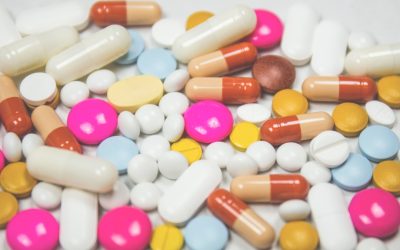
The American Diabetes Association defines diabetes as a group of diseases that result in too much sugar in the blood. There are two main types of diabetes: type 1 and type 2. Type 1 diabetes is an autoimmune disease, meaning that the body’s immune system attacks and destroys the insulin-producing cells in the pancreas. Without these cells, the body can’t produce insulin.
Type One Diabetes
With type 1 diabetes, the body’s immune system attacks and destroys the insulin-producing cells in the pancreas. This is called an autoimmune reaction. The exact cause of this reaction is unknown, but both genetic and environmental factors may play a role. Without insulin, the body can’t use glucose for energy, so blood sugar levels become too high. This can damage the body’s organs and tissues.
Symptoms
The most common symptoms of type 1 diabetes are increased thirst, increased urination, increased hunger, weight loss, blurred vision, fatigue, and irritability. In children, type 1 diabetes can also cause bedwetting and stomach pain. If left untreated, type 1 diabetes can lead to serious health problems, such as kidney failure, heart disease, stroke, and blindness.
Ketoacidosis, which is a life-threatening condition that can occur when there is not enough insulin in the body. Ketoacidosis causes nausea, vomiting, abdominal pain, and confusion.
Another possible symptom is diabetic neuropathy, which is nerve damage caused by high blood sugar levels. This can cause numbness, tingling, and pain in the hands and feet.
Diagnosis
The most common way to diagnose type 1 diabetes is with a blood test called a glucose tolerance test. This test measures the body’s ability to use glucose. If the test results show that the body can’t use glucose properly, then a doctor will do more tests to confirm the diagnosis.
There are a few other tests that may be used to diagnose type 1 diabetes. One is called the hemoglobin A1c test, which measures the average blood sugar level over the past 2-3 months.
Another is called the C-peptide test, which measures how much insulin the body is producing.
And finally, there is genetic testing, which can detect certain genes that increase the risk of type 1 diabetes.
Treatment
I’m glad to hear it! Now that we understand the symptoms and diagnosis of type 1 diabetes, let’s talk about treatment. The main treatment for type 1 diabetes is insulin therapy. This involves taking insulin injections or using an insulin pump. Other treatments may include making healthy lifestyle choices, such as eating a healthy diet and exercising regularly. Insulin therapy helps keep blood sugar levels under control and can prevent the complications of type 1 diabetes.
Glucose Monitoring. This involves wearing a small device, called a sensor, on the body. The sensor measures blood sugar levels and sends the information to a monitor or smartphone. The monitor or smartphone can then be used to track blood sugar levels and make adjustments to insulin therapy. Some people find that continuous glucose monitoring helps them to better manage their type 1 diabetes.
Artificial Pancreas Systems. These systems use a sensor, like the ones used in continuous glucose monitoring, to measure blood sugar levels. They also use an insulin pump, which delivers the right amount of insulin automatically. Some people find that this system helps them to better manage their blood sugar levels.
The systems are made up of three main parts: the sensor, the pump, and the control algorithm. The sensor measures blood sugar levels and sends the information to the control algorithm. The control algorithm then tells the pump how much insulin to deliver. It does this by considering factors like blood sugar levels, activity levels, and food intake.
Bariatric Surgery. This type of surgery is sometimes used to treat type 1 diabetes in people who are obese. The surgery helps to reduce the amount of food that the stomach can hold, which can help with weight loss. Weight loss can in turn improve blood sugar levels.
Type Two Diabetes
The American Diabetes Association defines type 2 diabetes as a condition in which the body doesn’t use insulin properly. As a result, glucose can’t get into the cells to be used for energy. Over time, this can lead to high blood sugar levels. Unlike type 1 diabetes, type 2 diabetes is usually caused by lifestyle factors, such as being overweight or obese, being physically inactive, and having high blood pressure or high cholesterol.
Symptoms Of Type Two
The symptoms of type 2 diabetes can vary from person to person, but some common symptoms include increased thirst, increased hunger, weight loss, fatigue, blurry vision, frequent infections, and slow-healing wounds. People with type 2 diabetes may also have symptoms like tingling, numbness, or pain in their hands or feet. If type 2 diabetes is left untreated, it can lead to serious complications, such as heart disease, stroke, and kidney damage.
Besides the ones we already talked about, there are a few other possible symptoms of type 2 diabetes. These include vaginal yeast infections, gum disease, skin conditions like dark, velvety patches of skin called acanthosis nigricans, and sleep apnea. It’s also important to know that some people with type 2 diabetes may not have any symptoms at all. For this reason, it’s important to get regular checkups if you’re at risk for type 2 diabetes.
Diagnosis
If a person has risk factors for type 2 diabetes, their doctor may recommend a blood test called the A1C test. This test measures the average blood sugar level over the past three months. If the A1C test shows that blood sugar levels are high, the doctor may order a fasting glucose test or an oral glucose tolerance test to confirm the diagnosis.
Some people with type 2 diabetes have symptoms like frequent urination and fatigue before they are diagnosed. Others may not have any symptoms at all.
Treatment
There are a few different types of medications that are used to treat type 2 diabetes. The first type is called metformin. It helps the body use insulin more effectively. A second type is called a sulfonylurea. It helps the pancreas make more insulin. There are also other types of medications, such as GLP-1 receptor agonists and DPP-4 inhibitors. Some people with type 2 diabetes also need to take insulin.
Metformin. This is the most commonly used medication for type 2 diabetes. It is safe for most people and has few side effects. The most common side effect is upset stomach. Metformin also lowers cholesterol and helps control blood pressure.
The next type of medication is the sulfonylureas. These drugs can cause low blood sugar, so it’s important to watch for signs of low blood sugar, like feeling shaky or hungry.
GLP-1 receptor agonists. These drugs help the pancreas make more insulin and also reduce appetite. They can cause nausea, so it’s important to take them with food. The final type of medication is called DPP-4 inhibitors. These drugs also help the pancreas make more insulin and don’t cause weight gain.
Key Takeaways
The most important lifestyle change for people with type 1 diabetes is to check their blood sugar levels regularly. They should also follow a healthy diet and get regular exercise. They should also learn to recognize the signs of low blood sugar, such as feeling shaky, hungry, or lightheaded. It’s also important to have a plan in place for what to do if they have low blood sugar. These are all important ways to stay healthy with type 1 diabetes.
Another important thing for people with type 1 diabetes is to have a good relationship with their healthcare team. This includes their doctor, diabetes educator, and dietitian. These professionals can provide support and guidance as the person with type 1 diabetes learns to manage their condition. They can also help to identify and treat any complications that may arise.
That’s wonderful! Now that we’ve covered the medications, let’s talk about lifestyle changes. Losing weight and getting regular exercise are the two most important lifestyle changes for people with type 2 diabetes. Losing just 5 to 10 percent of your body weight can make a big difference in blood sugar control. Regular exercise also helps lower blood sugar and improves overall health.
Type 2 diabetes is a lifelong condition. It’s important to keep taking your medications and making lifestyle changes even if your blood sugar levels improve. Doing so will help you stay healthy in the long run.






0 Comments